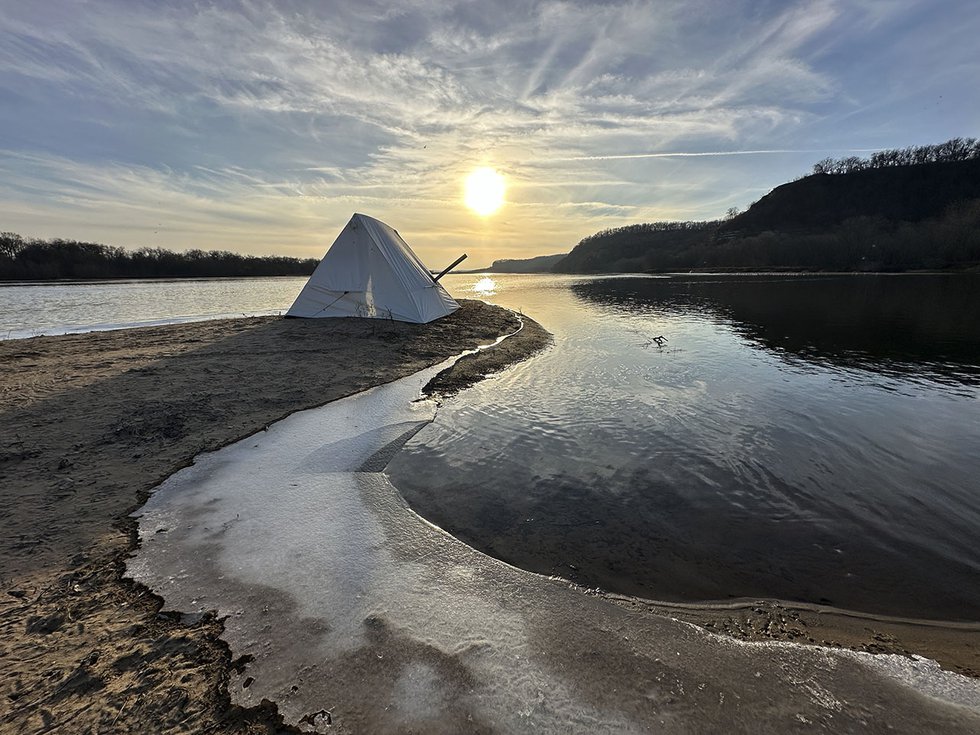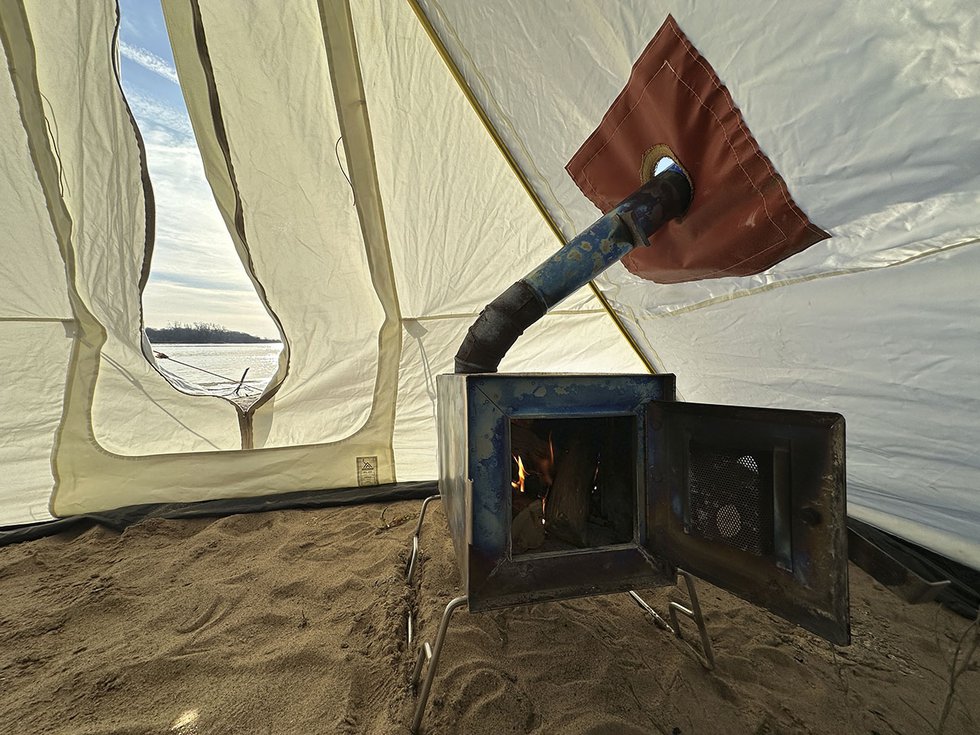Written for The Isthmus, December 2024

It’s December, and a canoe sits on the front lawn. Around it are duffels and packs, a few paddles, and two Rubbermaid containers. One contains small chunks of hardwood, fuel for what’s in the other container: a small, titanium wood stove. In one of the duffels is a 10×10-foot canvas tent. Floorless canvas tents and small stoves are not common, but they should be.
The canoe I’m taking is the perfect boat for a trip such as this: it’s a small, stable tandem canoe that I rigged up as a solo for me and my 100-pound pup. This time, no pup, who tends to exit the canoe with little warning upon the sight of a single goose.
I adhere to the self-evident maxim If you want solitude, go where people aren’t. The submaxim, if that’s a thing, is that people avoid inhospitable places. Or places people think aren’t hospitable. It could be a difficult hiking trail with many rocks and roots, or a river with long distances between landings. Thing is, there are no bad conditions, just the wrong attitude. You can do this. You can camp in the winter out of a canoe. Two weeks before winter solstice. Temps below freezing combined with water and ice are the inhospitable part of the quest.
The Arena landing on the lower Wisconsin River seemed like a good bet. There are sandbars aplenty for camping, and the river flow is low right now, and I can easily paddle against the scant current. This meant I didn’t need anyone to shuttle my truck downstream, adding a lot of inconvenient logistics. I could just go, so I just went.
I drag my loaded canoe across a large sandbar at the landing to get to the water. A small shelf of ice has formed along the edge of the sand, which makes it easy to climb into the canoe and slide down into the water, like a fat, lazy seal oozing off an ice floe. I’m drifting downstream, but with a few strokes I’m making way against the lazy current. I am dressed for inhospitable conditions, but I have no plans of testing them. I know where I’m going. It’s not even a mile upstream.
The tent goes up first. Years ago I made sand stakes out of aluminum T-bar, which vary in length from 12 to 18 inches. The 12s are good for staking the bottom of the tent to the sand, the 18s I use for guylines. With a dozen stakes, holding down my hospitable place, it won’t be moving.
I set up the stove. Titanium is a lightweight metal with a melting point of over 3,000 degrees. The stovepipe sections nest inside themselves and fit inside the stove along with the legs. The wood I’m carrying weighs as much as my shelter. I could leave the wood and gather along the river, but 1) I don’t want to and 2) I don’t have to.
The stovepipe feeds through a stove jack, a hole in the canvas surrounded by a fireproof material that won’t let the pipe touch the canvas. With everything set up, I throw in some kindling and a few pieces of scrap 1x1s from the shop. Moments later, I have a baby fire. I stoke it up with a few chunks of oak.
The stove adheres to a maxim too: little and often. If you load it up with fuel and shut the damper down, it won’t matter; you’ll still roast for a few hours and then wake up cold. The proper method is a chunk or two, just once in a while. You wake up, you throw a chunk in, and you go back to sleep.
It’s amazing how dark it is this close to the solstice. It’s only 4:30 p.m., hours before bedtime. I throw a few chunks of wood into the stove and go for a walk. It’s a short walk as I am on a small sandbar attached to a small island, but it’s wonderful to see how long you can make a short walk last. The river flows by, dark like molasses, and ice covers the vegetation along the shore. There are bird tracks, but precious few, and none appear to be very new.

Back inside the tent it’s already too warm. I overloaded the stove and didn’t close the damper enough, and now I have to unzip the door and open the small vents at the ridgeline. It cools off, but I’m going to have to pay more attention to little and often.
My cot is set up to keep me above the cold air settling close to the sand. Canvas tents are floorless, which makes a lot more sense in the winter, so you can scootch the legs of the stove down into the sand a little.. The propane lantern is lit, so the headlamp goes back into the pack, and the cot gives me a place to unload gear until I get my folding table set up.
Cooking on the stove is almost cheating, and I’m all for it. I try to avoid smelly foods in the wild places (because bears), but a pork chop goes well with my kale salad, which doesn’t get soggy in its Nalgene bottle. Glass bottles aren’t allowed on the river, so my beverage is canned. Keep your Michelin star; I’m content.
I spend a lovely night in silence and darkness, rousing periodically to stoke the stove. It pings as it warms and cools, which I find comforting. As the temperature drops, I don’t even know it. My thermometer reads 80 degrees at the ridgeline.
The current keeps the river from freezing, which would strand me on a sandbar for a while. As much as I like that idea, there are miles to go before I sleep. For now, I’m sure that I’m the only person sleeping on a sandbar on the 90 or so miles of the lower Wisconsin River. Solitude achieved.
